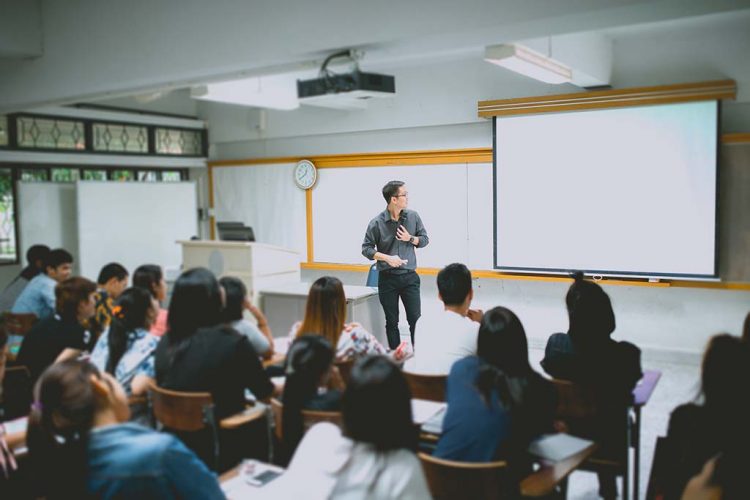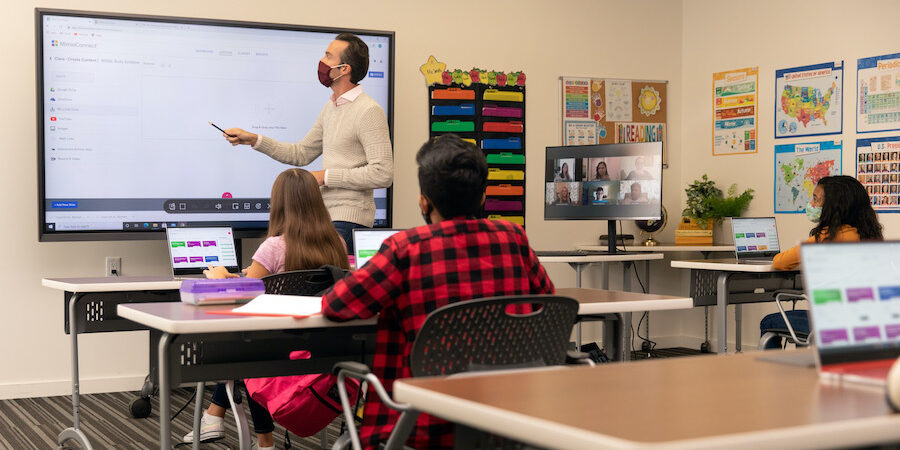A Comprehensive Guide to the Numerous Understanding Approaches in Primary Science Direction
The exploration of varied discovering approaches in main science instruction offers a chance for educators to enhance trainee interaction and comprehension significantly. By examining hands-on understanding methods, inquiry-based approaches, and joint methods, we can determine effective techniques that accommodate various finding out styles. In addition, the combination of innovation and differentiated guideline plays a critical function in cultivating an inclusive environment. The concern remains: just how can these methods be successfully implemented in the classroom to maximize their influence? The answer exists in a more detailed assessment of each strategy and its implications for mentor scientific research.

Hands-On Learning Methods
Hands-on discovering strategies play a crucial role in primary science direction, engaging trainees in active expedition and trial and error. These approaches permit students to connect straight with sensations and products, promoting a much deeper understanding of clinical ideas. By utilizing manipulatives, designs, and real-life experiments, teachers produce an environment where trainees can observe, hypothesize, and evaluate their ideas.
Such techniques not only boost comprehension but also grow crucial reasoning and problem-solving abilities. When trainees take part in tasks like constructing basic devices, growing seeds, or performing chain reactions, they are motivated to ask concerns and seek solutions with their own observations. This experiential strategy assists to demystify complex clinical principles, making them more accessible and relatable.
In addition, hands-on discovering promotes cooperation amongst peers, as students often function in groups to perform experiments or share findings. This teamwork not just enriches their discovering experience but additionally establishes essential social abilities. Inevitably, integrating hands-on techniques in main scientific research direction fosters a long-lasting love of learning and inquisitiveness about the environment, laying a strong structure for future academic quests in scientific research and beyond.
Inquiry-Based Discovering
Inquiry-based learning is an educational approach that motivates pupils to ask questions, check out sensations, and construct their very own understanding of clinical concepts. This method changes the emphasis from conventional teacher-led guideline to a more student-centered experience, where learners take the effort in their instructional trip. By fostering curiosity, inquiry-based knowing promotes deeper interaction with the product, permitting students to explore topics in a purposeful context.
In practice, this method usually involves hands-on experiments, observations, and vital thinking activities that line up carefully with the clinical approach. Pupils are urged to create theories, layout examinations, and analyze information, which grows important abilities such as analytical and analytical reasoning. The role of the educator in this framework is to facilitate exploration, directing students through the inquiry procedure while urging independent idea and partnership.
Additionally, inquiry-based discovering nurtures a feeling of possession over the discovering process, motivating students to seek understanding actively. This method not just improves understanding of scientific concepts yet likewise fosters a long-lasting love for understanding, furnishing trainees with the abilities needed to navigate an increasingly intricate globe.
Collaborative Knowing Approaches
Collective understanding methods encourage students to engage in purposeful interactions with peers, fostering a shared duty for their instructional outcomes. In main science guideline, these strategies encourage learners to collaborate to discover scientific concepts, primary science tuition Singapore resolve issues, and carry out experiments (primary science tuition Singapore). By joining group activities, students can take advantage of diverse point of views, permitting richer understanding and retention of clinical expertise
One trick facet of joint knowing is the emphasis on interaction abilities. Students must express their ideas, listen proactively to others, and discuss concepts, all of which are essential expertises in both real-world and scholastic contexts. This social communication not only improves their understanding of scientific principles but also advertises synergy and dispute resolution skills.
Furthermore, collaborative learning commonly brings about boosted inspiration and engagement. When students see the worth of their payments within a group, they are more most likely to take possession of their learning trip. Teachers can facilitate this procedure deliberately structured team jobs that line up with curriculum objectives while offering guidance on reliable partnership techniques. On the whole, integrating collaborative discovering methods in key science instruction cultivates a vibrant understanding atmosphere that prepares pupils for future academic and social difficulties.
Modern Technology Integration in Scientific Research
The integration of innovation in key scientific research instruction improves find out this here discovering experiences by giving innovative tools and resources that sustain various teaching approaches, consisting of joint learning - primary science tuition Singapore. The use of electronic systems, simulations, and interactive applications allows students to engage deeply with clinical principles, helping with a much more hands-on technique to understanding
Digital laboratories, for instance, enable learners to conduct experiments safely and effectively, advertising inquiry-based discovering. These devices can imitate real-world clinical circumstances, permitting pupils to envision intricate procedures that would certainly be difficult to replicate in a traditional classroom setup. Innovation promotes communication and partnership among students, as they can share searchings for and function together on tasks with on the internet platforms.
In addition, multimedia presentations and educational video clips can enhance lessons by satisfying varied knowing styles, making abstract principles much more accessible. Information analysis devices likewise empower pupils to gather and analyze clinical information, strengthening vital thinking abilities. In general, the strategic consolidation of technology in key science guideline not only boosts interaction yet also prepares pupils for a technologically innovative culture, furnishing them with essential skills for future scientific endeavors.
Set Apart Direction Approaches
Distinguished direction strategies are crucial for dealing with the diverse demands of students in primary science education and learning. These strategies enable teachers to customize their teaching techniques to suit varying abilities, rate of interests, and finding out designs within the class. By employing distinguished direction, instructors can click site produce a comprehensive setting that cultivates involvement and boosts understanding of clinical concepts.
One effective technique is to utilize versatile organizing, which allows students to collaborate with peers at similar skill degrees or with varying viewpoints. This technique urges peer discovering and advertises critical reasoning. Furthermore, using options in projects can empower students, permitting them to pick jobs that resonate with their interests while still meeting curricular objectives.
Moreover, incorporating tiered jobs is an additional useful method. By developing tasks with differing degrees of complexity, educators can make certain that all pupils are properly challenged, no matter their efficiency. Utilizing developmental evaluations to evaluate recognizing additional enables educators to change their instructional approaches dynamically, making sure that each learner obtains the support they require.
Ultimately, applying separated instruction strategies in key science education and learning not only boosts student understanding results yet likewise grows a passion for science, preparing students for future scholastic searches.

Verdict
In recap, efficient key scientific research guideline necessitates a diverse technique that incorporates hands-on learning, inquiry-based techniques, and collective methods. The combination of innovation and set apart direction even more caters to diverse discovering designs, promoting an atmosphere favorable to exploration and important reasoning.
The exploration of diverse knowing techniques in primary science instruction offers a possibility for instructors to improve trainee engagement and comprehension significantly.Hands-on learning strategies play a critical function in primary scientific research guideline, involving students in energetic expedition and testing.Inquiry-based knowing is an instructional strategy that motivates students to ask concerns, examine phenomena, and create their own understanding of scientific principles.Collective learning strategies equip students to involve in significant communications with peers, promoting a shared responsibility for their academic outcomes. On the whole, integrating collaborative understanding techniques in primary scientific research instruction grows a dynamic discovering environment that prepares students for future scholastic and social challenges.